Estimated reading time: 15 minutes.
October/2017 – The Sigma 18-300mm f/3.5-6.3 DC Macro OS HSM is one of the most flexible zoom-lens on the SLR market, covering nearly 16.6X in focal length. A single lens equivalent to the wide-angle 27mm distance on a full-frame camera, and up-to a super-telephoto equivalent of 450mm, it’s is possible to shoot the tightest spaces with dynamic compositions of architecture and groups of people; to distant subjects like landscapes, wildlife and sports. The overall minimum focusing distance of just 39cmm also renders a 1:3 magnification ratio at 300mm; also giving this Sigma some Macro capabilities; one of the most flexible lenses we’ve ever seen and probably the only you’ll ever need on your kit. All with a built-in optical image stabilizer and Sigma’s newest Global Vision Contemporary design, it’s an all-new lens with better handling, usability, optical formula and performance; just like the new Art and Sports series. But for just US$399 on the entry-level market, is the 18-300mm the ultimate zoom on your kit? Let’s find out! Nice reading.
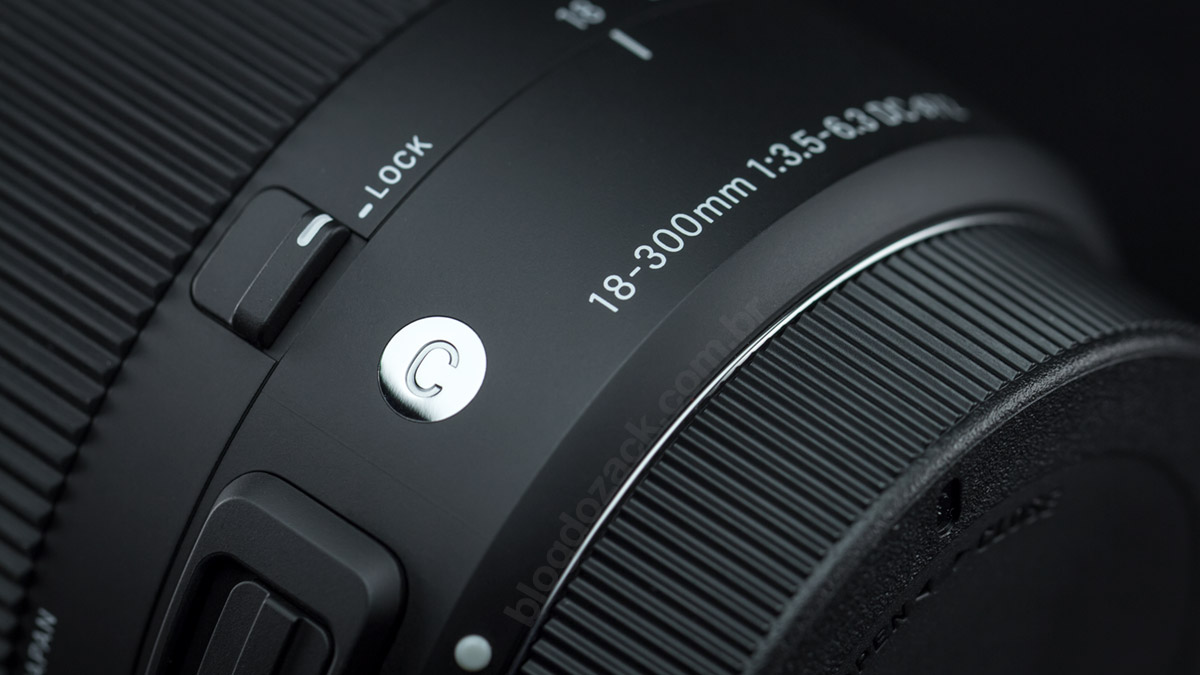
At 10.3 x 7.8cm of 585g of mostly plastics, the Sigma 18-300mm f/3.5-6.3 DC is truly an engineering marvel; one of the smallest lens on the APS-C market, despite being one of the longest, at least in focal length. For us who’ve seen the larger Canon EF-S 18-200mm f/3.5-5.6 IS that’s shorter in focal length reach, it’s impressive how Sigma 18-300mm managed to be the same size as a 17-55mm f/2.8 (and we’ve already seen two). So much portability comes from the triple-cam zoom that uses three distinct internal barrels to move all the optical groups, just like Sigma’s 17-70mm f/2.8-4 design. The manufacturer once again uses its novelty TSC thermally stable composite to keep the lens as sturdy as possible, but also light and cheap; perfect for the low-end market. And it works: this 18-300mm is robust despite being compact and light; one of the smallest 300mm lens ever.
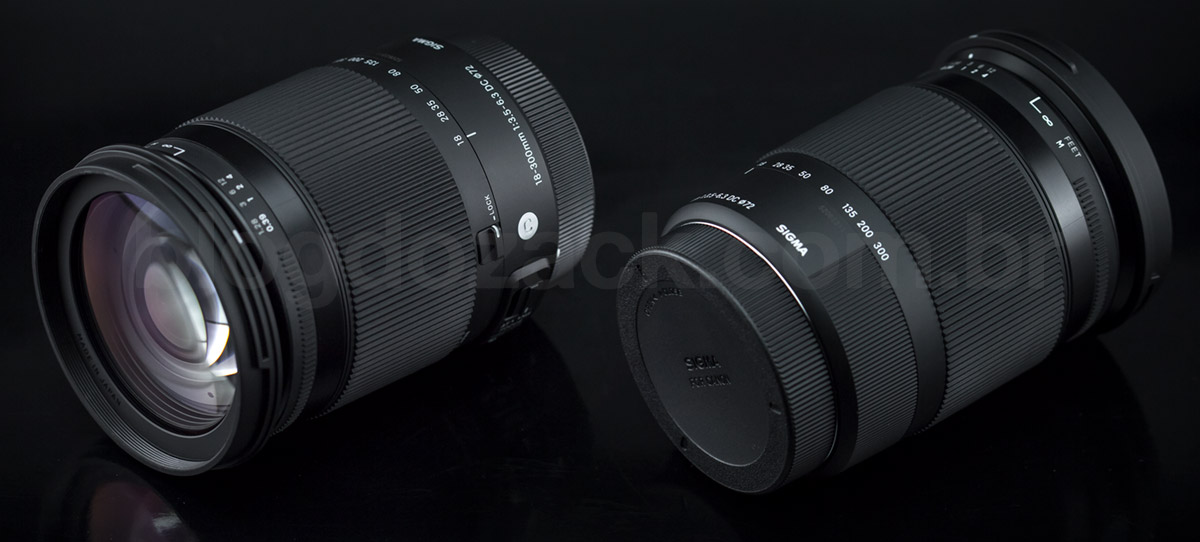
In your hands the 18-300mm balance is curious on the APS-C market; not the worst, given it’s flexibility, but not the best. With so many glass pieces and a lengthy barrel to support the 300mm, it gets somewhat front-heavy when paired with lighter APS-C cameras, also a bit harder to use with it’s tougher-than-usual zoom ring; it’s not the smoothest “always-with-you” lens. The zoom ring sits at the rear and features about 4.8cm of length, despite only 3.7cm covered with rubber, with deep grooves at about 1mm and plenty of grip. But that doesn’t make the 90º movement from 18mm to 300mm a bit on the tougher size, at least on my brand new copy, and it’s even variable; harder from 135mm to 300mm. That’s bad to use with smaller cameras, specially mirrorless models with recessed hand grips, and can even misalign the camera connection during use, causing communication errors along the day. So I definitely recommend testing it prior to purchase.
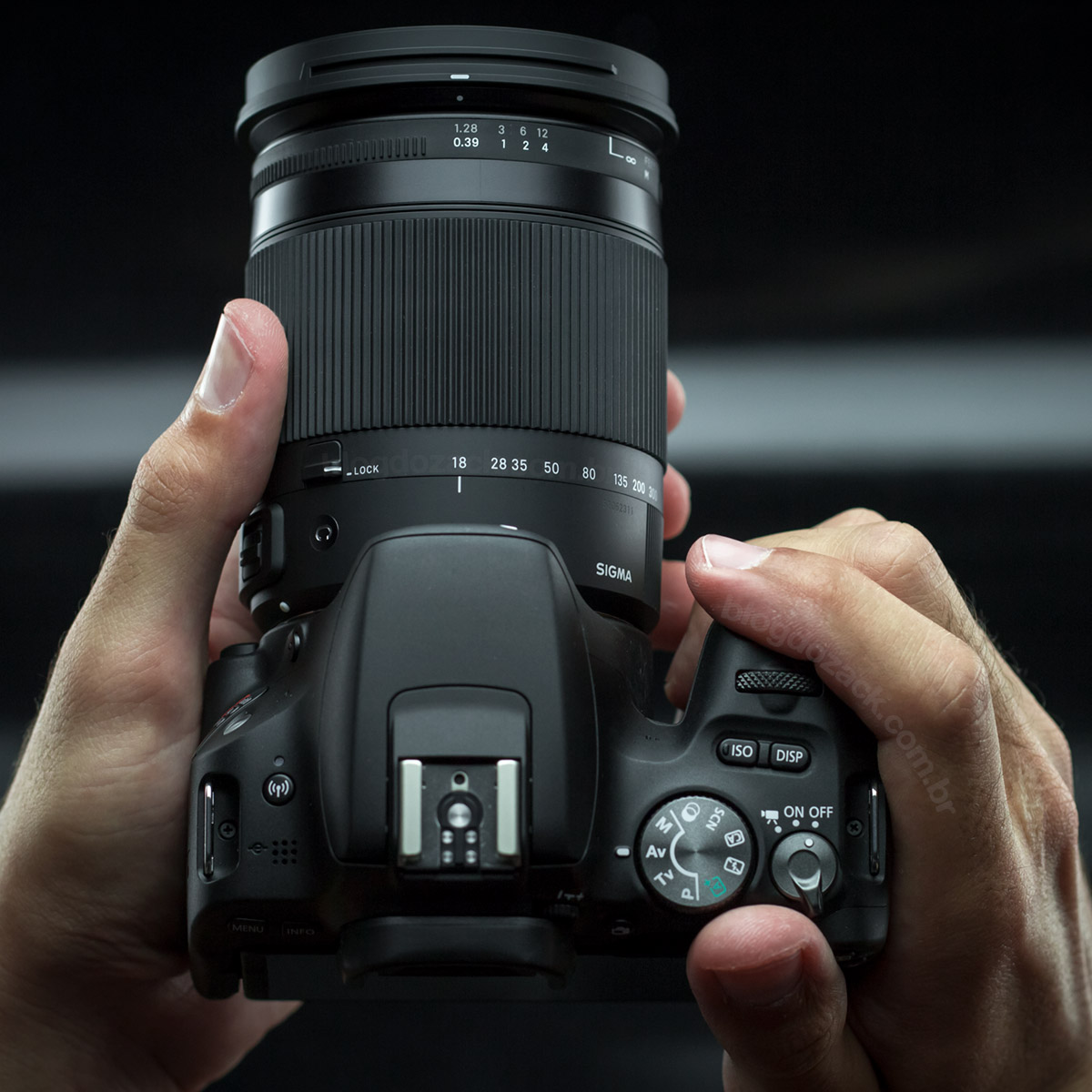
At the front the manual focus is typical of APS-C’s zoom Sigmas with a retractible mechanism, spinning the outer focusing ring together with the internal AF motor; thus reducing the area available for your fingers. This ring sports about 0.8cm of rubber on a 1.8cm plastic piece, much less pronounced than the zoom ring, made to avoid accidental contact. It also looses the “full time manual” usability demanding an extra step switching from AF to MF, delaying faster adjustments in case the camera fails to focus. It’s all simplified on the lower-cost market, and both Canon EF-S 18-200mm and Sigma’s 17-50mm/17-80mm also suffers with a mechanical manual focusing ring.

As this ring is mechanically coupled to the focusing motor, it turn always at the same position; allowing for distance markings in feet and in meters to be printed on the ring itself. But more interestingly are the numbers printed on the middle zoom barrel: 1:10.1, 1:8.4, 1:6.2, 1:4.5, 1:3.5 and 1:3. These indicate the maximum magnification from the optical groups, when set at the minimum focusing distance of 0.39cm, close enough for Sigma to declare it as “macro”. And while it’s far from a proper “1:1” macro lens, it can be helpful to photograph closer subjects. At the maximum value a 10cm object will be rendered at about 3.3cm on the image sensor, more than enough to magnify details of insects and products; or simply shoot everyday selfies and food in a restaurant (hello, Instagramers!). But at the maximum magnification the lens must be set at 300mm, and it extends to 19cm; leaving the subject a mere 8-9cm from the first optical element; harder to proper shine some light onto it. But it’s a welcomed addition: most product photography shots on blog do zack are made at a 1:5 ratio with Canon’s EF 100mm f/2.8 L IS USM, and this Sigma could do the same.
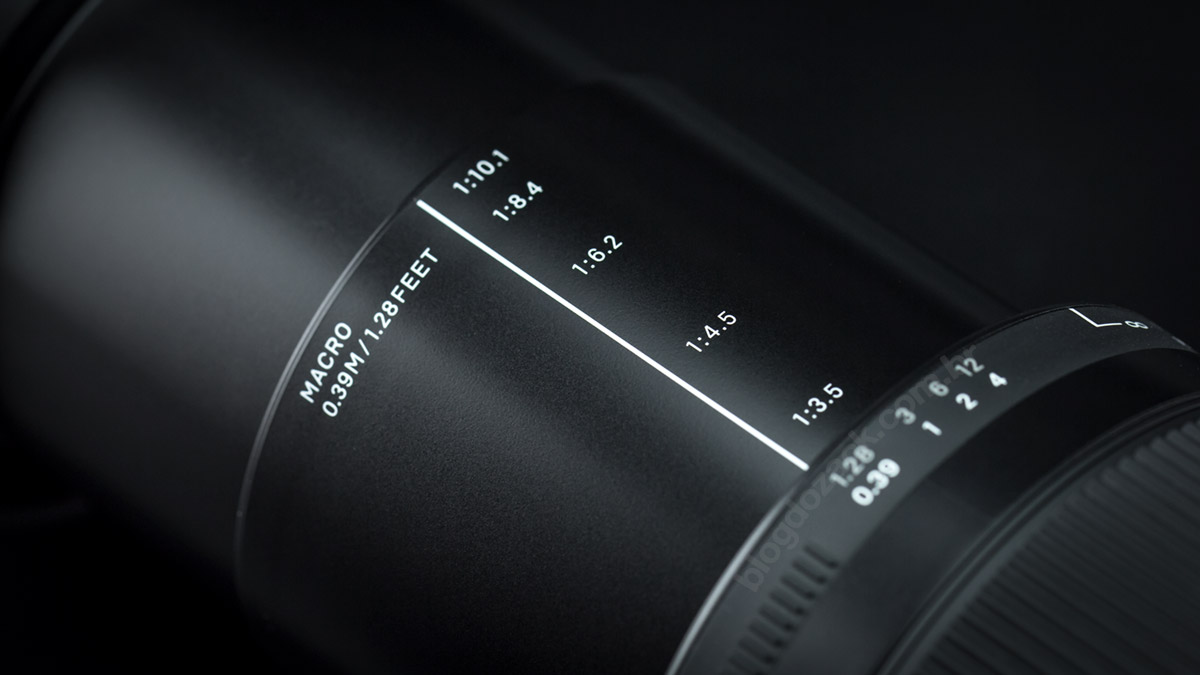

“8 Plus” with the EOS SL2 + Sigma 18-300mm f/3.5-6.3 DC OS Macro at f/9 1/4 ISO100 @ 300mm; MFD, 1:3 macro.

Crop 100%, detail on a Retina iPhone screen.
Inside Sigma opted for its excellent HSM auto-focusing motor using Canon’s USM or Nikon SWM principle. Absolutely silent and smooth, the minimum focusing distance to infinity is done at only 45º, surprisingly quick at just 0.5s on most EOS DSLRs, using phase-detection modules; or during Live View using newer Dual Pixel cameras. However here tested with Canon EOS M Hybrid CMOS focus, the accuracy rate never surpassed 60% with stationary subjects, no matter the light situation; and that’s not good. Most of my shots came out of focus even using both phase + contrast modes on the EOS M, that’s known for it’s better-than-usual precision. But pixel-by-pixel my images simply doesn’t work, making it harder to evaluate the optical performance; are those shots out-of-focus or the optics are always soft? So I recommend double checking the files from this 18-300mm.

“Pagode” with the EOS M + Sigma 18-300mm f/3.5-6.3 DC Macro OS HSM at f/6.3 1/160 ISO100 @ 113mm; the photo looks in focus…

Crop 100%, but at a closer analysis we notice the sharpness is not the best.
But tested with the EOS T7i AI SERVO using the viewfinder the Sigma’s 18-300mm focusing ratio is fair for its class: about 50% of my shots are in focus with moving subjects, flirting with some action photography. I wasn’t really expecting a 100% accuracy from a US$399 16.6X zoom, so 50% is more than enough. And as the depth of field isn’t the thinnest at f/6.3 300mm, depending on your output the raw lack of sharpness will barely be visible. Considering the market’s trend to add many focusing points even on entry-level cameras, all with at least 5 frames per second shooting speeds and deep buffers, it’s easy to recommend this lens for amateurs looking to practice action photography on a budget. While your results may vary, overall the 18-300mm focus is okay.
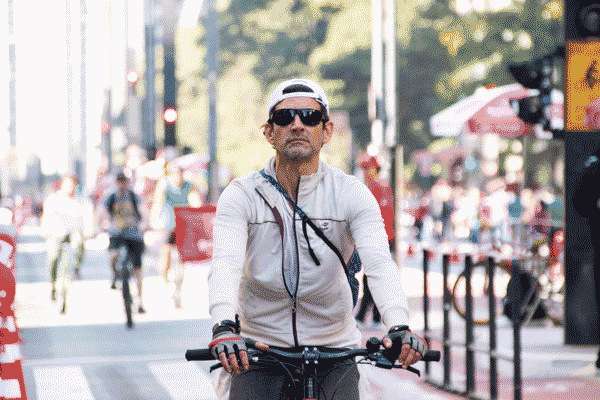
“Ciclista II” with the EOS T7i + Sigma 18-300mm f/3.5-6.3 DC Macro OS HSM C at f/6.3 1/1000 ISO1600 @ 200mm.
Also inside Sigma offers its OS optical stabilizer, an almost mandatory feature on these longer focal lengths. However it doesn’t declares the maximum operability of this OS, plus it features the same weird operation of the longer 150-600mm; not stabilizing the camera’s viewfinder, only the frame during capture. This is very different from Canon’s IS (image stabilizer) that keeps the image steady whenever the camera’s button is half-way pressed, making it easier to compose your shot and also to shoot high quality handheld videos. The 18-300mm OS module is also very when it starts working, giving the impression it’s broken straight from the box. But it is not: I managed to consistently get sharp images at 1/5s on 18mm (3-stops), making it easy to leave your tripod at home. It’s very handy for low-light photography with lower-ISOs, keeping the camera in your hands.
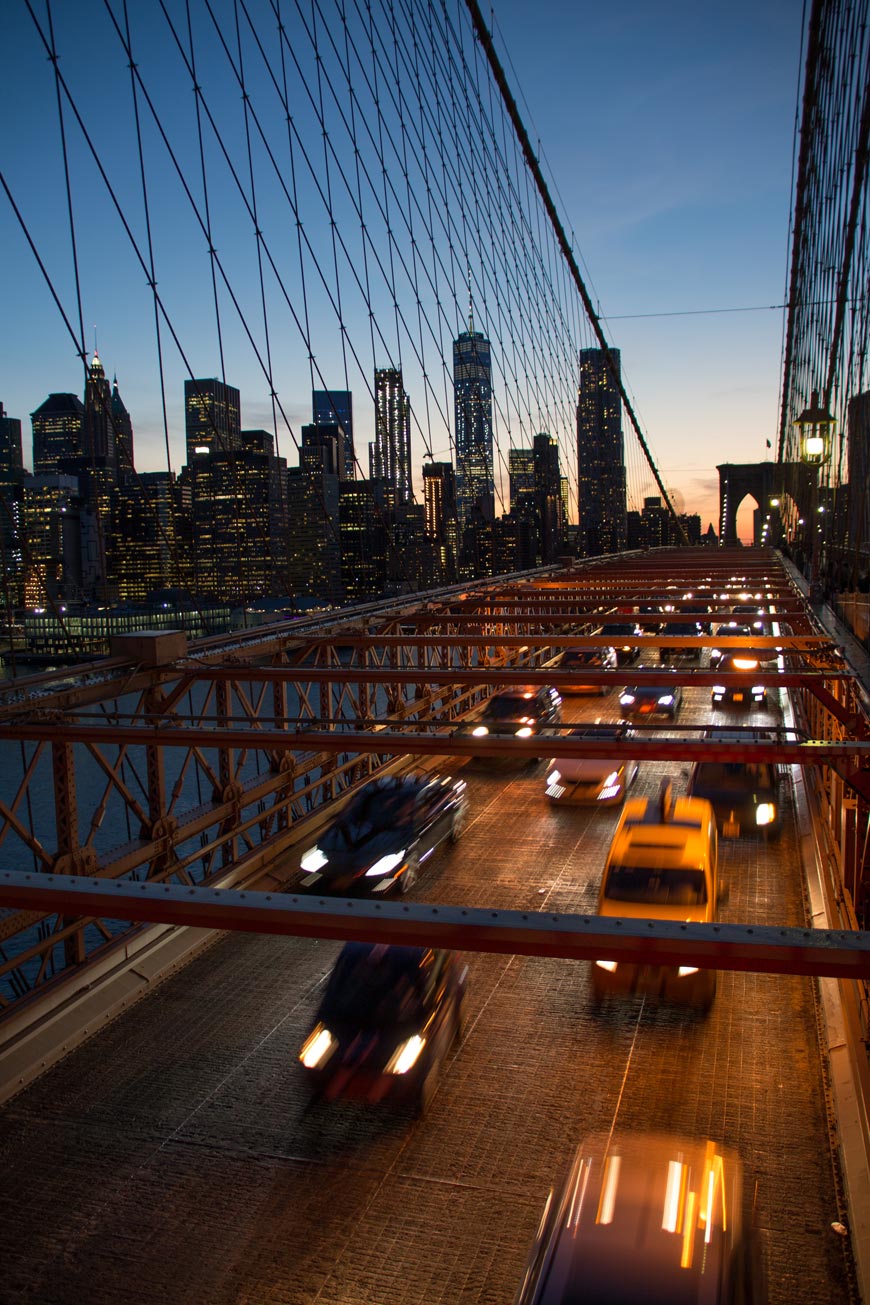
“Bridge” with the EOS M + Sigma 18-300mm f/3.5-6.3 DC Macro OS HSM at f/3.5 1/5 ISO100 @ 18mm.
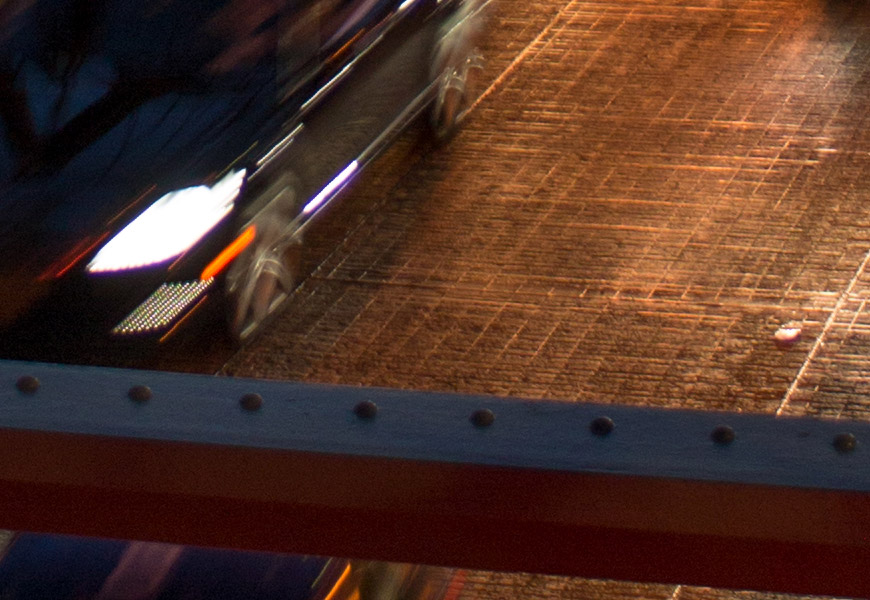
Crop 100%, despite the longer exposure, the OS “held” the frame in place for a sharp image.
However during video recording this OS module is almost useless: it jitters at the widest angle; makes a lot of noise; and barely holds the frame in place after 135mm. Going against one of the most popular EOS functions since the 5D Mark II – the EOS Movie mode – the 18-300mm could even be used by professionals on the higher-end market, using an EOS C or Blackmagic camera; both with smaller image sensors. But not even at the widest focal lengths (18-50mm) the image is stable enough to let the tripod at home; something we don’t see happening on Canon’s IS lenses. And from 135mm and up we get the same results as the viewfinder framing: it doesn’t even feels like the OS is on! Canon’s EF-S 18-200mm clearly makes a much better job with its older IS module, much smoother during video recording, so I can’t really recommend this Sigma 18-300mm for video.
Finally at the front the 18-300mm accepts ø72mm filters, relatively standard despite the higher cost and used by top-of-the-line lenses. They fix on a robust plastic thread well above the first optical element, compatible with thicker filters like variable ND and polarizers. Sigma also includes the LH780-07 lens hood included in the box, as good as any Art series hood with a rubberized area to grip your fingers; also harder to scratch than Canon’s optional EF-S 18-200mm hood. At the rear Sigma’s metal mount is robust and smooth to pair with Canon’s EOS cameras, without the EF-S’s rubber piece preventing it from being attached to full-frame cameras; it’s possible to mount this 18-300mm on an EOS 5D, despite no focal length not covering the larger image circle. And Sigma also doesn’t declare any form of weather resistance and I can see some dust specks inside my new lens.
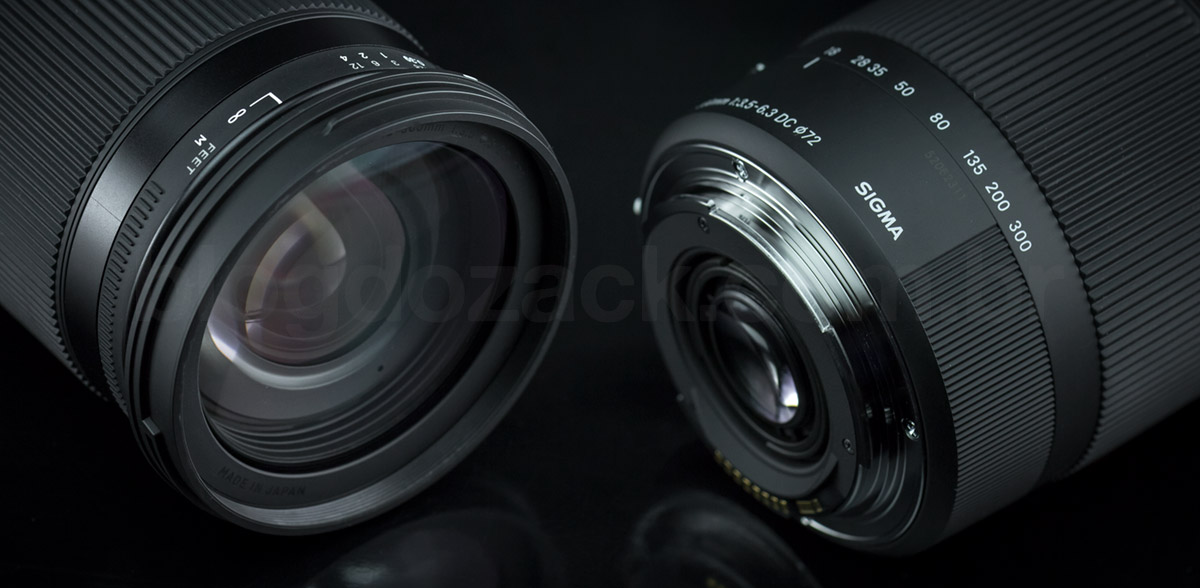
The 18-300mm is an interesting lens coming from Sigma that’s one of the few brands to actually deliver a very complex zoom lens on such an accessible package (US$399). Canon doesn’t offer nothing similar on its aging EF-S lineup, and other brands are even more extreme like Tamron’s 18-400mm. But this Contemporary lens stays true to the Contemporary lineup with an easy to use, better designed, better quality controlled product; now within reach of even the most basic amateur. And considering how flexible it is with its focal length, its macro magnification, optical stabilization, compact design, AF and the following pictures, it’s possibly the best APS-C lens for those looking for a simple “one lens only” kit. Let’s see if its images can seal the deal.
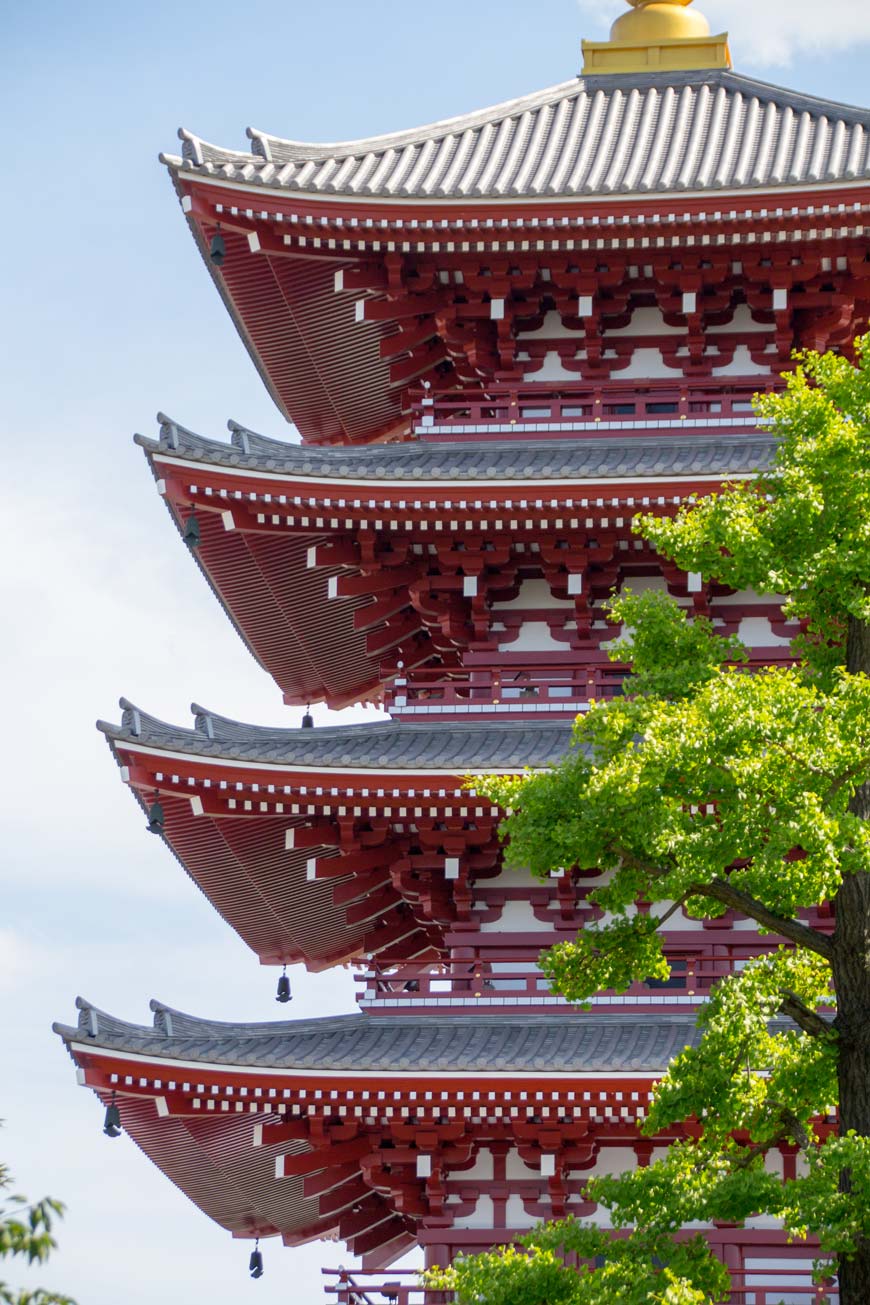
“Pagode II” at f/6.3 1/320 ISO100 @ 100mm; all photos with the Canon EOS M.
With an incredible 17 elements in 13 groups optical formula, one SLD super-low dispersion lens, 4 (four!) FLD lenses that Sigma declares having the same performance as fluorite; 3 aspherical lenses and integrated chemical coatings, unfortunately the 18-300mm f/3.5-6.3 performance is a bit inconsistent; sometimes impressive; sometimes awful, hard to recommend. Let’s be frank: I wasn’t expecting stelar performance from a 16.6X zoom that’s way too complex to deliver perfect image quality. And while “sharpness” won’t make a bad photo any better, I wished for more resolution from this 18-300mm; it delivers acceptable files only between f/6.3 and f/11. And maybe that’s the idea: it doesn’t work pixel-by-pixel wide open, but it’s good enough at the optimized apertures. So the purchasing decision might came from this: if you’re shooting under plenty of light, or using the smaller f/stops with a tripod, the results can be convincing.

“Pagode III” at f/6.3 1/200 ISO100 @ 63mm.
Wide open is very difficult to work with the Sigma 18-300mm: auto focusing issues, internal reflections, lack of sharpness and the shallow depth of field even on the APS-C format; it’s a disaster waiting to happen. While some websites declares a good raw performance at the center frame, wide open, they forget to mention the lack of contrast that significantly reduces the details. And the widest aperture is soon gone at most focal lengths, varying accordingly: f/3.5 only at 18mm; f/4 20-30mm; f/4.5 30-40mm; f/5 40-70mm; f/5.6 70-135mm; and f/6.3 as soon as 135-300mm; there’s the reason why Canon’s EF-S 18-200mm is much larger at f/5.6 200mm. At these values most files can’t deliver the resolution demanded from nowadays APS-C format, that are already at 18-24MP; a higher density than most full frame cameras. So it’s hard to expect raw performance from such an exotic lens, especially on the entry-level, low-cost market.
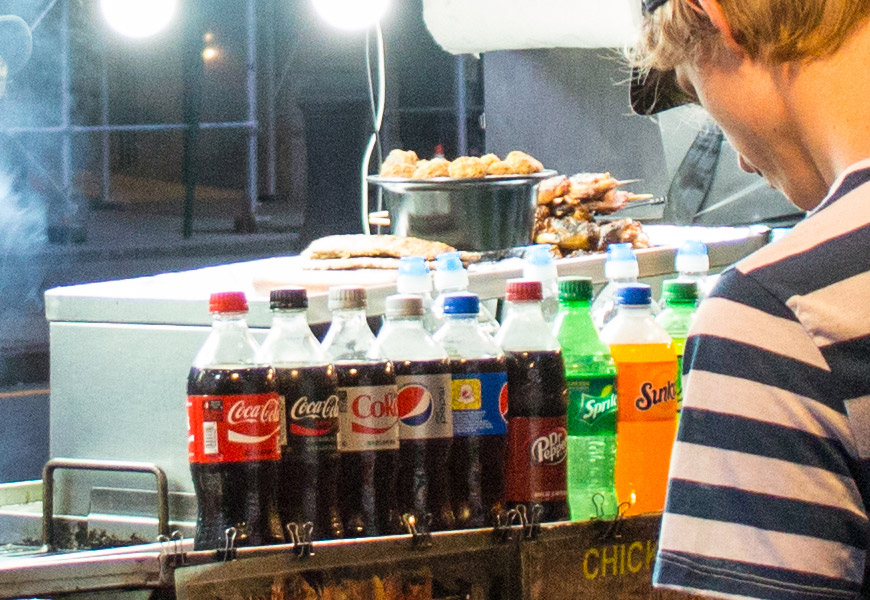
Crop 100%, all letters in details of a street photograph.
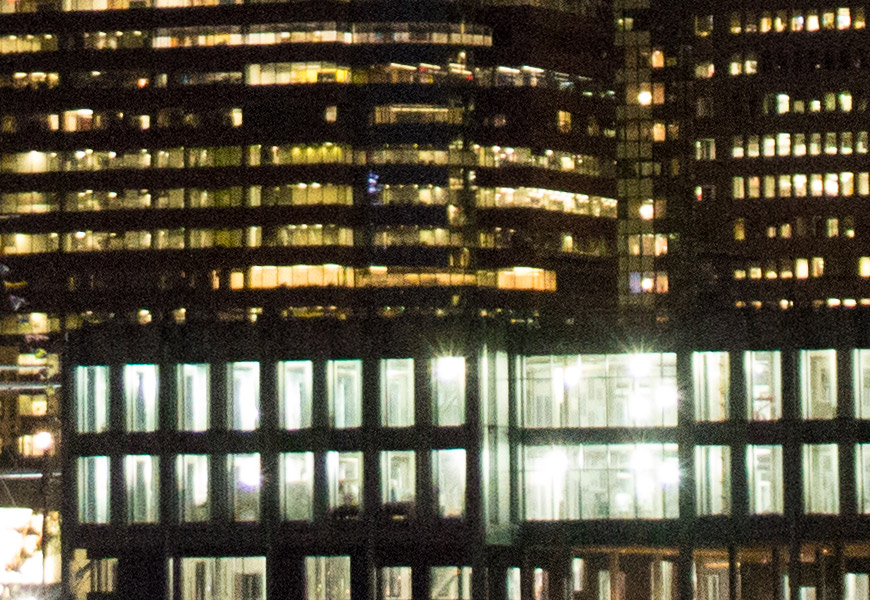
Crop 100%, fine lines easily render on the center frame, even wide open.

Crop 100%, some details are there, but it lacks contrast; thus the sharpness is reduced.

Crop 100%, notice the slight blurriness of pixels.
Stopping down doesn’t really enhance the raw resolution but the contrast, thus the perceived sharpness. Between f/6.3 and f/8 it is possible to render detail on bricks, make-up, hair, leafs and everyday textures, be it at the widest angle at 18mm, or at telephoto at 300mm; as long as, I’ll repeat, you carefully focus the lens. Even at these optimized apertures I got less than ideal files due to the lack of focus, most probably because the EOS M Hybrid CMOS system detected some harsh edges as sharp contrast; thus leaving the AF imprecise. But repeating the tests using the EOS T7i in SERVO mode, or even the SL2 in manual focus, it’s possible to see how the 18-300mm delivers near perfect files when its 2-3/stops closed. It’s the 4 FLD elements showcasing the same performance as fluorite, but here accessible in an entry-level zoom, thanks to Sigma’s magical low-price.

“Tokyo” at f/8 1/200 ISO100 @ 100mm; through a glass window.
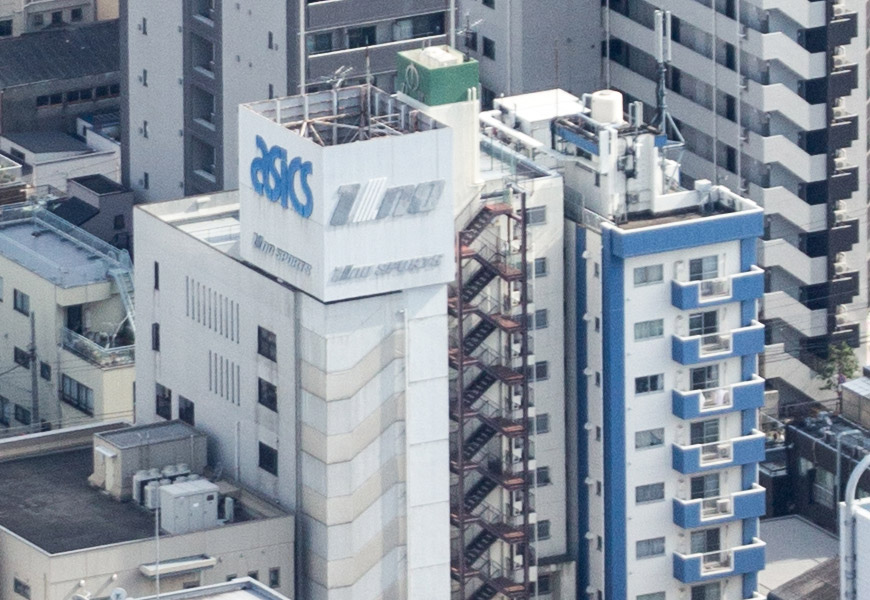
Crop 100%, impressive details at the optimized apertures.
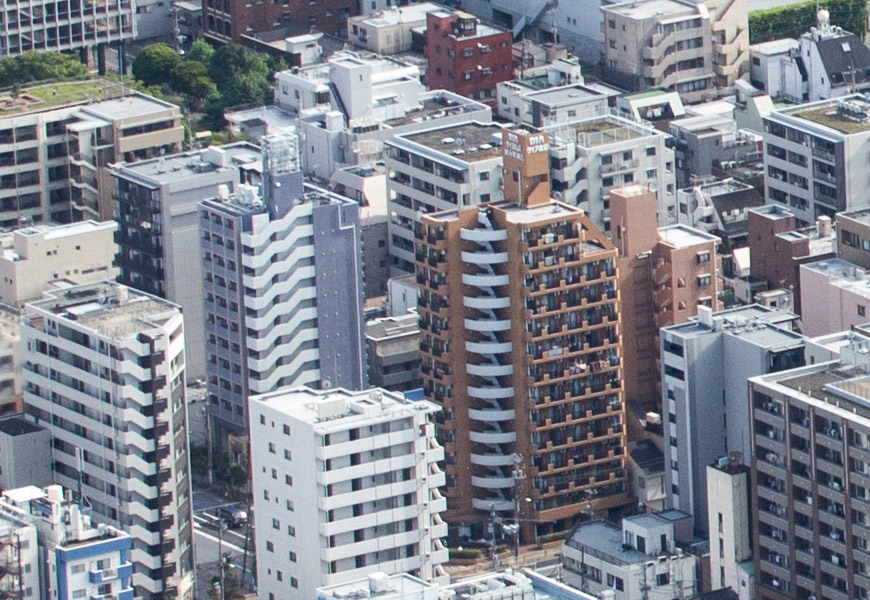
Crop 100%, plenty of details for large prints, even from the entry-level camera.

“Copa” at f/6.3 1/640 ISO100 @ 18mm.

Crop 100%, incredibly sharp wide angle image, typical of zoom lenses.
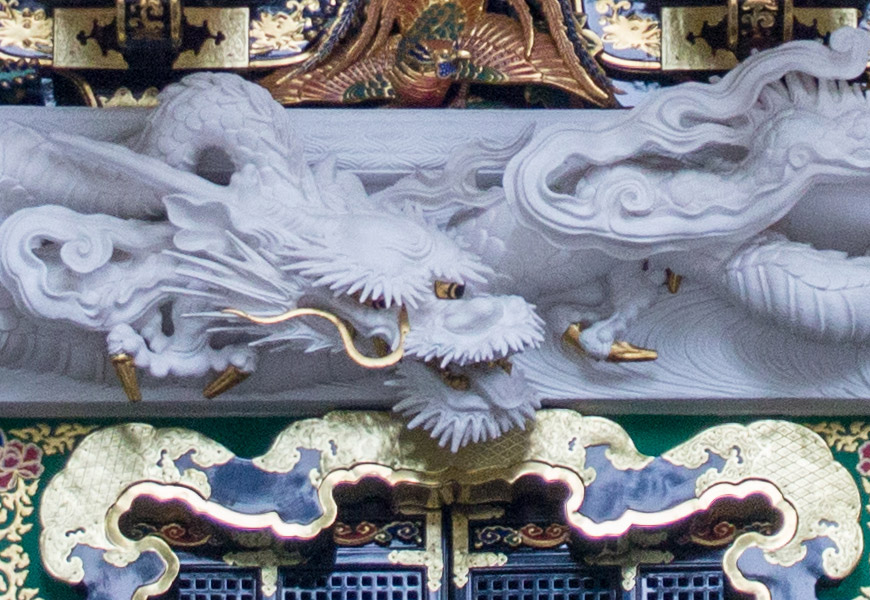
Crop 100%, the image contrast is greatly enhanced when 2-3/stops down.
On the other hand the chromatic aberrations are well controlled; bad compared to most primes, but good enough for such a complex zoom. They’re all there: lateral around the edges, with green and magenta lines to the frame’s right; blue and purple to the left; primary axis, with colored bubbles on highlights that shine over the lower contrast; and secondary axis, near the out-of-focus back and foreground. It’s actually less than Canon’s recently tested EF-S 18-135mm f/3.5-5.6 IS USM that aimed for higher resolution, despite failing to deliver it; the first-party lens shows more aberrations although it’s far less complex. But nonetheless the Sigma’s issues are easy to fix: web outputs probably hide it and any software can electronically compensate for these aberrations. However during video recording the good control of aberrations is welcomed on this Sigma; raw video recorded with Blackmagic’s Cinema Camera show fewer issues, no matter the light scheme.

“Student” at f/6.3 1/500 ISO320 @ 260mm.
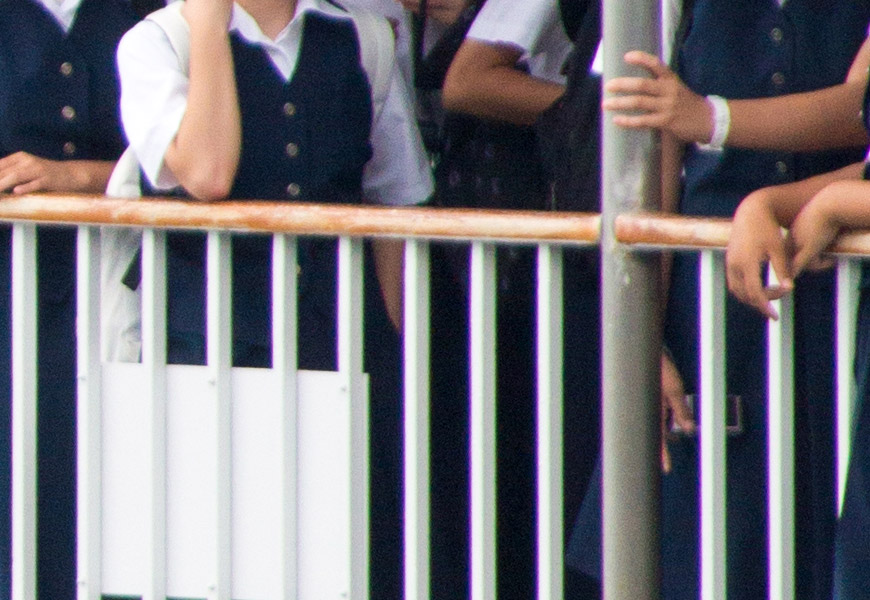
Crop 100%, colored contrast lines are all there but are discrete for this lens class.

“Copa II” at f/7.1 1/160 ISO100 @ 18mm.
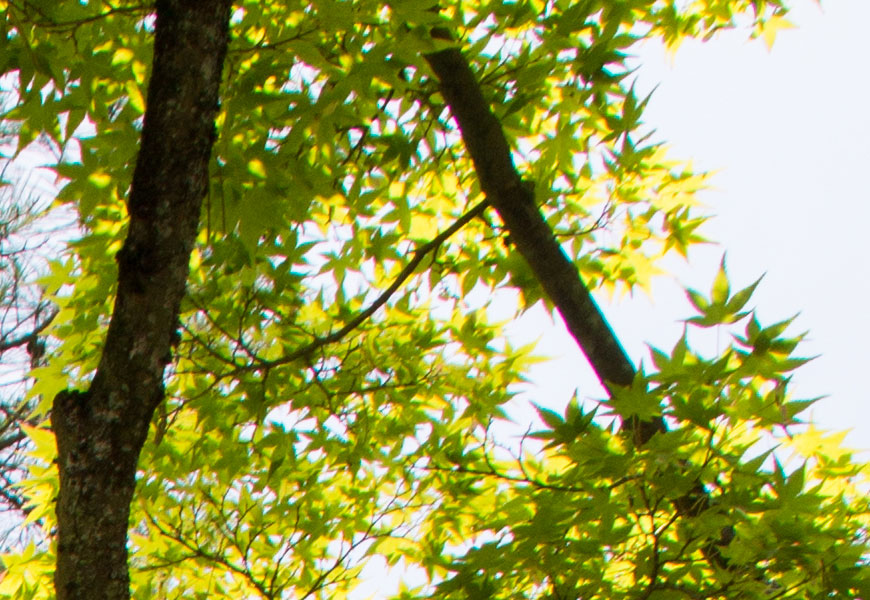
Crop 100%, colored lines on high contrast edges.

Crop 100%, every sort of aberration on the edges, despite being easy to fix.
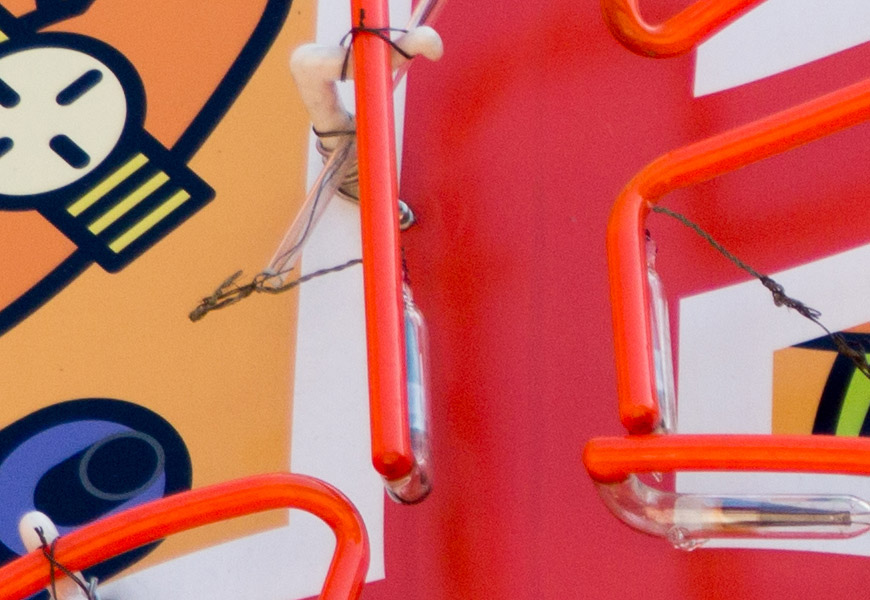
Crop 100%, a lack of aberration on some focal distances.
“R.F.” at f/3.5 1/10 ISO500 @ 18mm; before and after software compensation; notice this ceiling is a dome. “Downtown” at f/4.5 1/50 ISO1250 @ 37mm; before and after software compensation. “Janelas” at f/5.6 1/20 ISO5000 @ 70mm; before and after software compensation. ”Prédios” at f/5.6 1/50 ISO2000 @ 95mm; before and after software compensation. ”Prédios II” at f/6.3 1/400 ISO200 @ 300mm; before and after software compensation.The geometric distortion is visible on the 18-300mm, expected from such a complex zoom lens. And it’s pretty complex: a discrete bulge happens at 18mm not distorting the frame’s edges, but the center; it becomes a mustache from 50mm to 200mm; and then a pincushion at 300mm; “dropping” straight lines to the center frame, typical of wide-angle/telephoto zooms. While the distortion won’t destroy everyday shots of people, landscapes and mundane tridimensional objects, it will be obvious when shooting architecture and graphics. But thanks to the DSLRs longer flange distance (between lens mount and image plane), the images doesn’t suffer as much; any updated camera firmware should have the lens correction profile activated automatically, with near perfect image quality. We’ve seen much worse results from Fuji’s XF 18-135mm or Sony’s E 16-50mm PZ that had to squeeze an APS-C frame on a much shorter mirrorless mount.
With an up to 1:3 maximum magnification, some macrophotography is possible with the Sigma 18-300mm. But the optical performance is, as expected, not the best. Once again it’s not the lack of resolution: details and fine lines are visible on the center frame, allowing us to explore new worlds inside mundane objects. But the poor contrast from the 17 elements formula erases much of the image’s contrast, that demand heavy post-processing; and the chromatic aberrations are also magnified near the closes focusing distance of 0.39cm; very hard to be compared with crystal-clear dedicated primes. This effect reminds us of older magnifying glass of yore, used to read newspapers: the center of the image is clear, despite the poor contrast, and the edges are filled with colored lines. Once again, it’s not something you’ll notice when outputting the files to the web, but obviously won’t work for professional product photography.

“Folha” at f/6.3 1/30 ISO400 @ 300mm; minimum focusing distance.

Crop 100%, the sharpness is not best at the macro position, but it’s worth the fun.

Crop 100%, poor sharpness from the 17 elements at the minimum focusing distance.
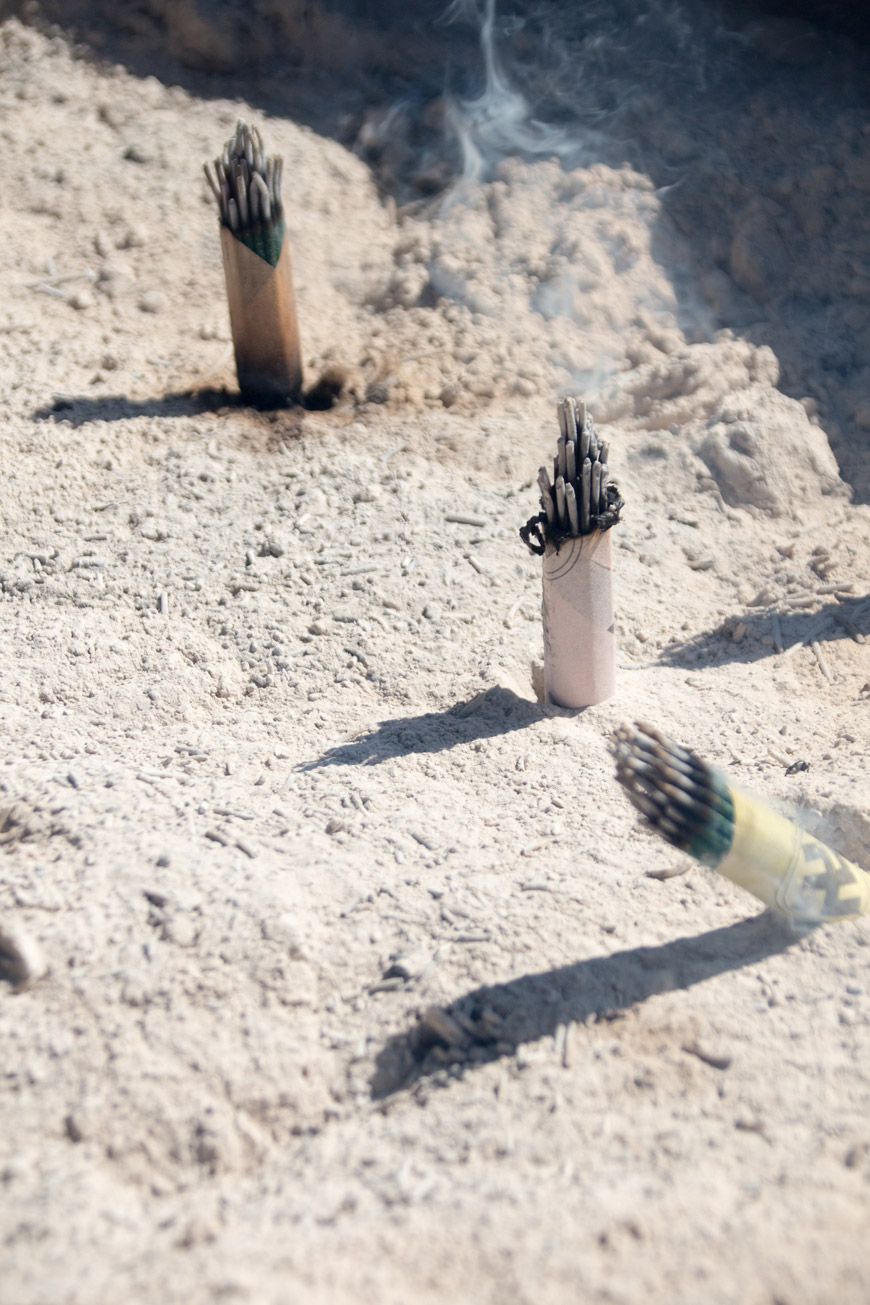
“Incenso” at f/6.3 1/1000 ISO100 @ 100mm; minimum focusing distance, but at 100mm.

Crop 100%, the performance enhances a bit outside of the minimum focusing distance.

Crop 100%, some lack of sharpness but the performance is reasonable for this class of equipment.
Finally the colors, the bokeh and the flaring are surprisingly good on the Sigma 18-300mm; good for a zoom lens and useful for creative effects. The yellow, red, green an blue tones are interesting from Canon’s EOS M color science, known for its vivid renderings of culture, landscape and skin tones; delivered mostly by its own EF/EF-S/EF-M lenses, but here on third-party, low-cost alternative. Its out-of-focus quality isn’t the best with “nervous” backgrounds that can’t handle repetitive lines as smoothly as less complex lenses (the “magnifying glass” effect strikes again), it’s better to pay double attention to the background for the best results. And even the flaring is well controlled: the 7-blade rounded aperture creates some color “explosions” on the highlights, far from the perfect stars from primes lenses; but it happens only when we point the camera at a strong light source. Overall it’s a pleasing look given the shallow depth of field and compositions using complimentary colors, on the same level of performance of first party lenses, but here at a fraction of the cost.
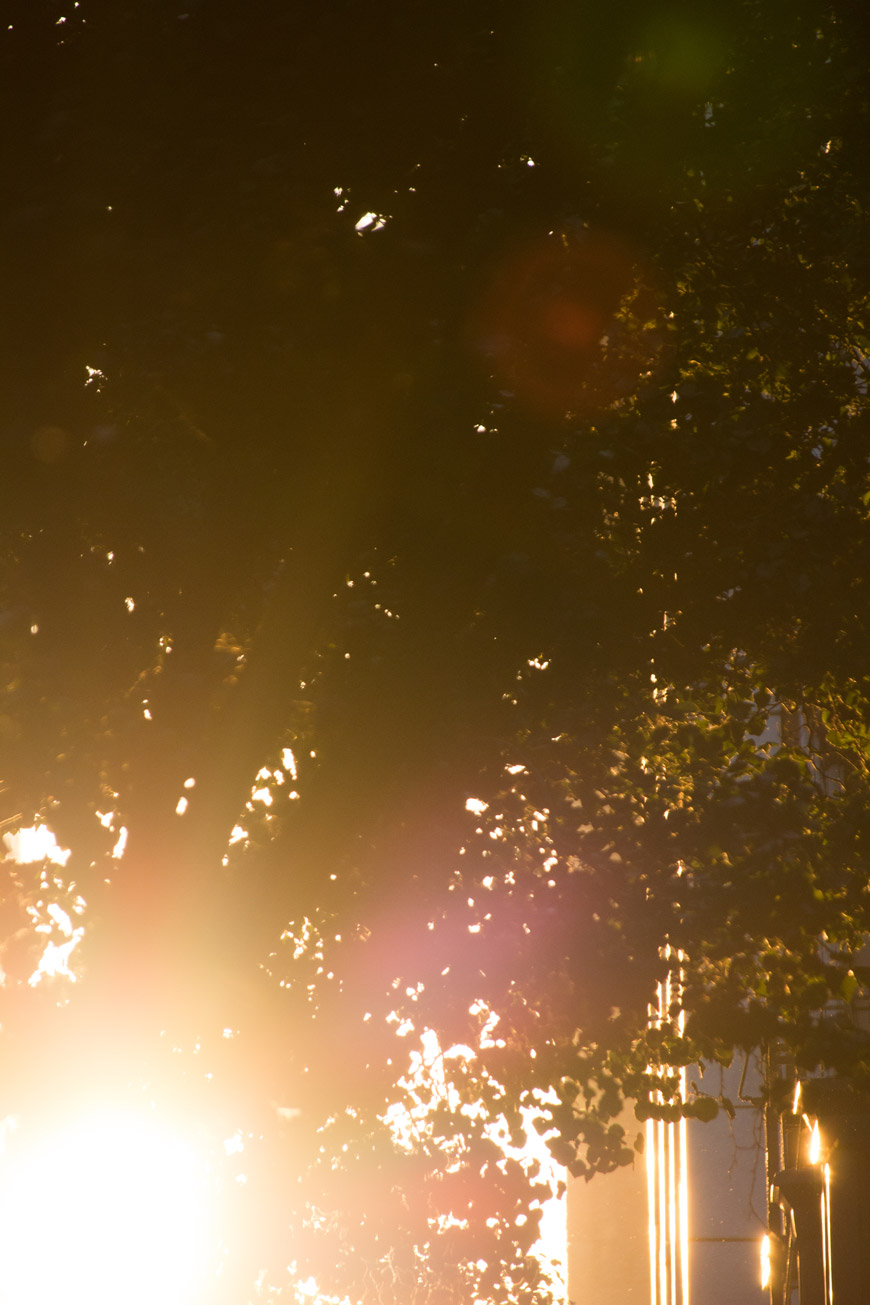
“Flaring” at f/6.3 1/320 ISO400 @ 251mm; forced flaring due to the creative framing.

“Market” at f/6.3 1/13 ISO100 @ 18mm.
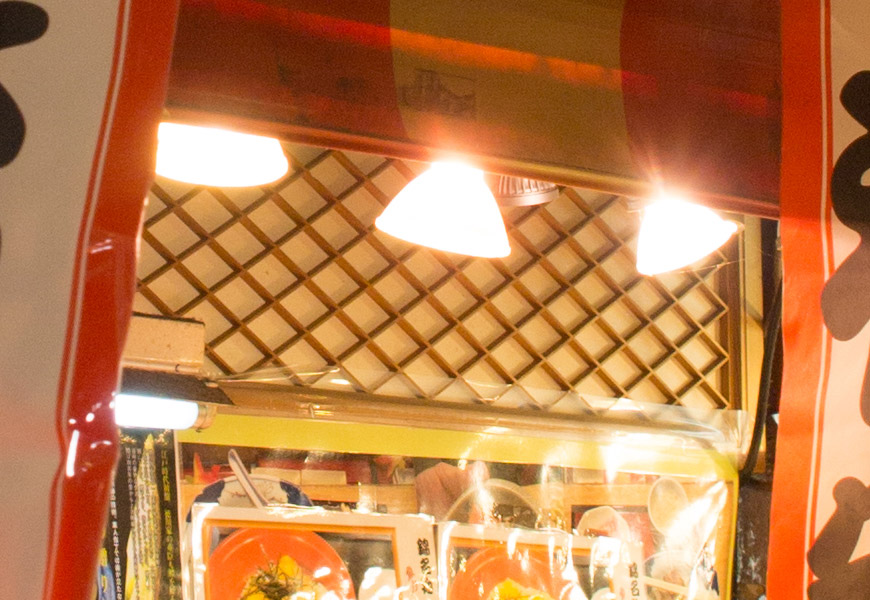
Crop 100%, a few undesired reflections from the 17 elements optical formula.

“Flower” at f/6.3 1/80 ISO100 @ 95mm; smooth background.

“Gizo” at f/7.1 1/200 ISO250 @ 135mm; but it can isolate the subject depending on your working distances.
The Sigma 18-300mm f/3.5-6.3 DC Macro OS HSM tries a lot of things on a single lens, and delivers most of them. The build quality is a strong selling point being robust, well finished and balanced, despite my brand new copy being a bit on the tough side. The feature set is impressive for its price and will surely please the entry-level photographer on the APS-C format: the auto-focus is fast and silent, although imprecise; the stabilizer is good at up-to 3-stops of compensation, despite useless for video recordings; and the short focusing distance allows for an up-to 1:3 macro magnification, no matter the questionable image quality. But the optical performance is truly as fair as it can get from this class of equipment, covering almost every focal length on a single lens; and the images just work, no matter the lack of raw resolution when we’re pixel peeping. If you need a do-it-all lens, it doesn’t get more flexible than this. Have fun with a single lens on your kit and nice shooting!